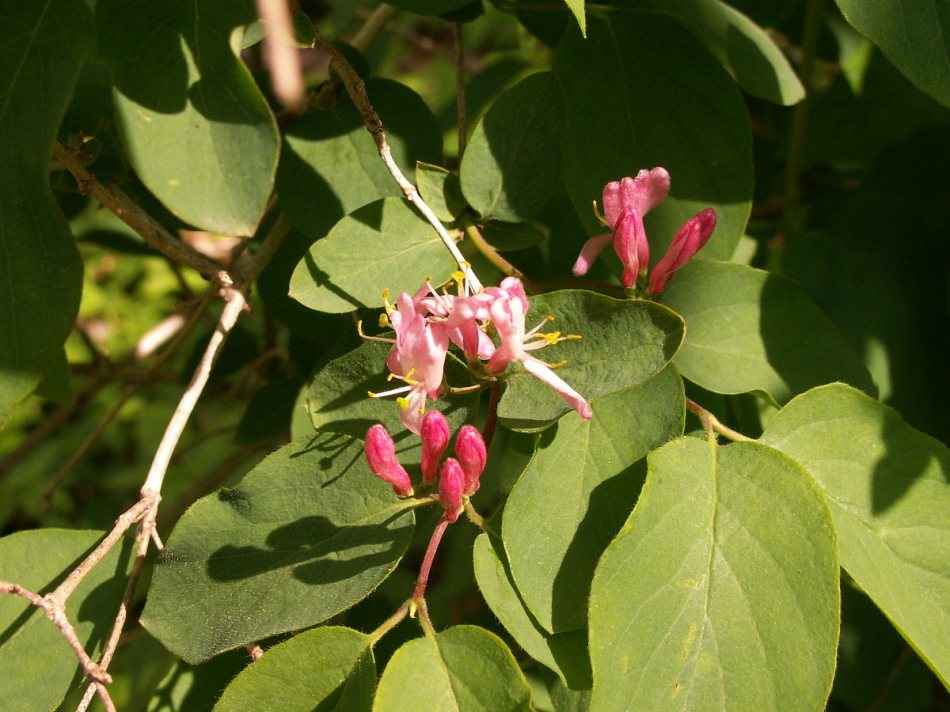A noxious weed in many places, but rather uncommon here so far, especially compared to the ubiquitous Morrow’s Honeysuckle (Lonicera morrowi). The pink flowers of this species are distinctive, although it may also produce white flowers, in which case it may be much harder to tell from Morrow’s. This bush was growing just above the lake in Schenley Park, where it was blooming in early May.
Gray describes the genus and the species which he places in the section Xylosteon:
LONICERA L. HONEYSUCKLE. Calyx-teeth very short. Corolla tubular or funnel-form, often gibbous at the base, irregularly or almost regularly б-lobed. Berry several-seeded. — Erect or climbing shrubs. Leaves entire. Flowers often showy and fragrant. (Named in honor of Adam Lonitzer, latinized Lonicerus, a German herbalist of the 16th century.) A large boreal genus most abundant in Asia and long popular in cultivation.
XYLÓSTEON [Tourn.] Pers. Leaves all distinct; peduncles axillary, single, 2-flowered at the summit; the two berries sometimes united into one; calyx-teeth not persistent.
Upright bushy shrubs.
Bracts (2 or sometimes 4) at the base of the ovaries small, lance-oblong to linear.
Corolla-lobes subequal.
Peduncles long and slender (1.4-3 cm. in length).
L. tatarica L. (TARTARIAN H.) Smooth shrub, 1.6-3 m. high ; leaves thin, glabrous, entire, cordate-oval, on short petioles ; corolla showy, white or rose-colored; the lobes subequal, widely spreading, nearly as long as the tube; berries united at the base, red or orange. — Escaped from cultivation and estab lished on rocky shores and sheltered banks, Me. to Ont., N. J., and Ky. May, June. (Introd. from Asia.)


2 responses to “Tartarian Honeysuckle (Lonicera tatarica)”
Does “noxious” mean “invasive” or does it mean “poisonous” in this case? Your use (and Wikipedia) suggest “invasive,” but because white honeysuckle is delicious, it would be useful to know which applies to pink honeysuckle.
“Noxious” in this case means “invasive” or “destructive,” the sense in which it is commonly used by the USDA and state authorities. Nothing I’ve read suggests that the flowers are poisonous in any honeysuckle species, although the berries of most (but not all) are toxic to some degree.